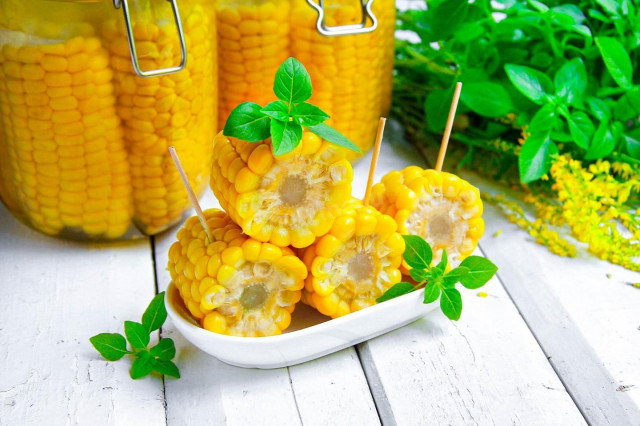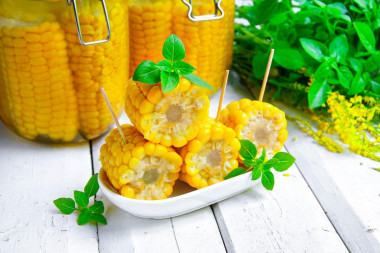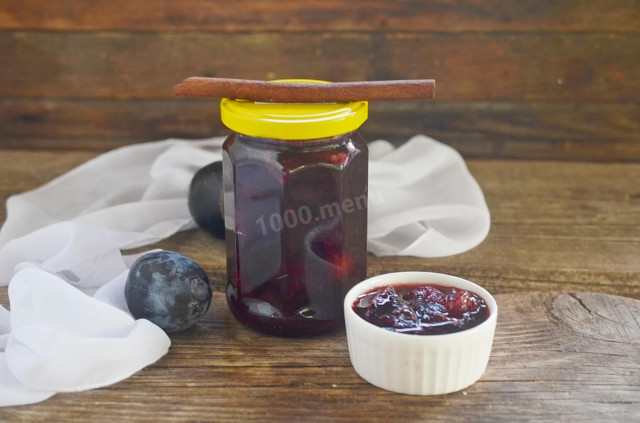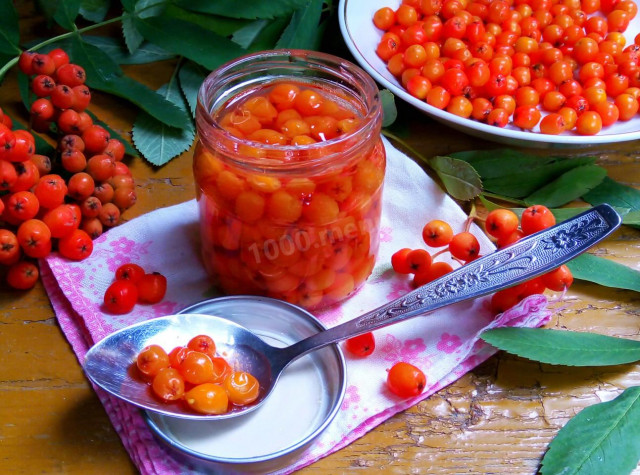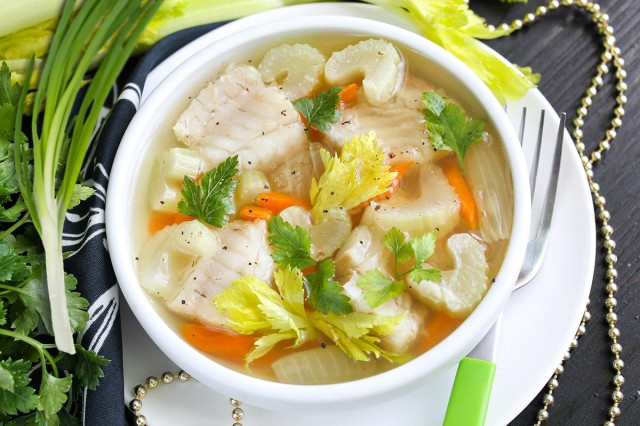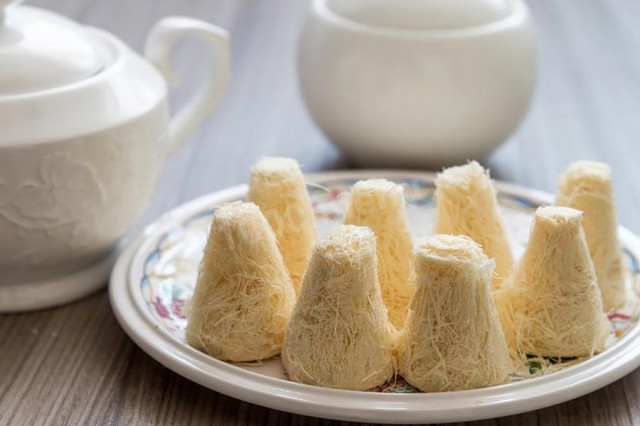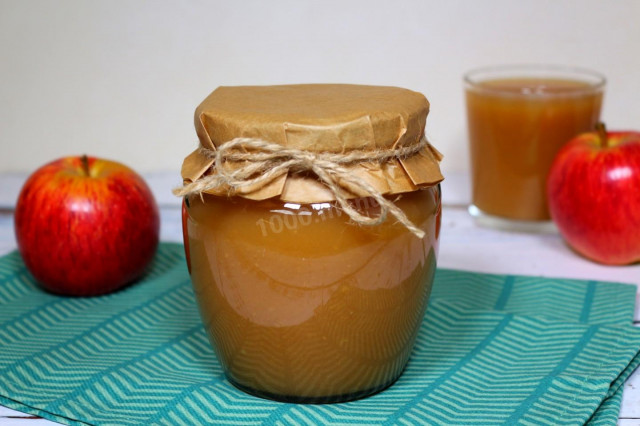Composition / ingredients
Step-by-step cooking
Step 1:
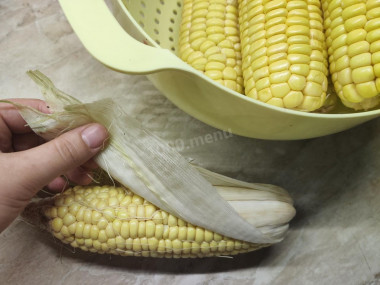
How to preserve corn on the cob for the winter? Prepare the products. Free the corn cobs from the leaves and long filamentous pistils.
Step 2:

You can use the whole cob. But then there will be a lot of unused space in the banks. I have "tried on" cobs to the container in advance. As a result, I cut 4 cobs in half and 1 into four parts. This allowed me to use the container as productively as possible. By the way, I will have 2 liter cans with a hook lock.
Step 3:

Boil the corn until soft, shifting the cobs into boiling unsalted! water. The cooking time may vary significantly depending on the size and degree of maturity of the cobs. I cooked the corn for about half an hour on medium heat. It is worth focusing on the softness of the seeds. Do not hesitate, cut off one grain and try it.
Step 4:

A small life hack. While the corn is cooking, you can simultaneously sterilize the cans over steam for 10 minutes, using a special metal ring or a steam basket, like mine. In general, you can sterilize cans in any way convenient for you. If you have metal lids, boil them separately in a ladle for 10 minutes.
Step 5:
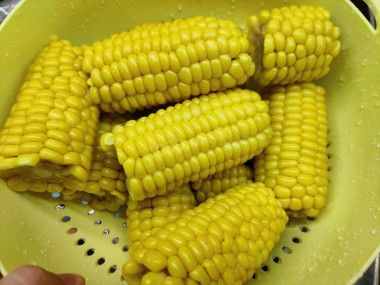
Put the finished corn in a colander.
Step 6:
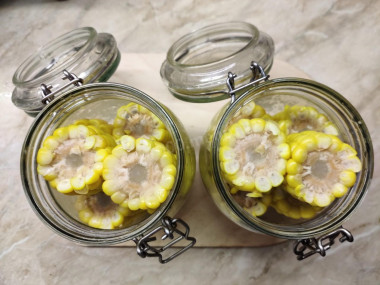
Distribute the corn into cans. I got 3 halves in the bottom row and 2 quarters in the top.
Step 7:

Pour boiling water into the center of the cans, on the corn, trying not to fall directly on the glass. Cover with lids and leave for 15 minutes to "rest".
Step 8:
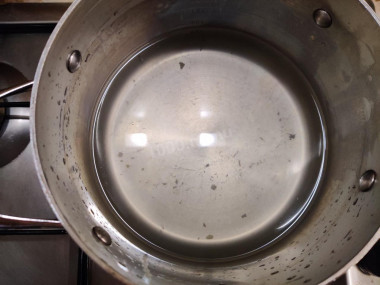
Drain the water from the cans into a saucepan (use a potholder). Bring to a boil over high heat, then add sugar and salt. Wait for the grains to dissolve for a couple more minutes. And remove the water from the fire.
Step 9:

Add nine percent vinegar and stir the marinade.
Step 10:
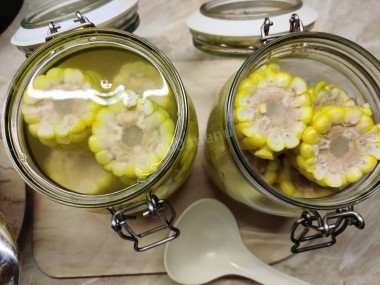
With a ladle, pour the marinade into the jars to the very neck, even with a slide". This way there will be less air left in the cans.
Step 11:

Close (or tighten) the jars with lids. Be careful not to get burned, because the excess of hot marinade will necessarily pour over the edge, thereby ensuring a minimum of air in the workpiece.
Step 12:
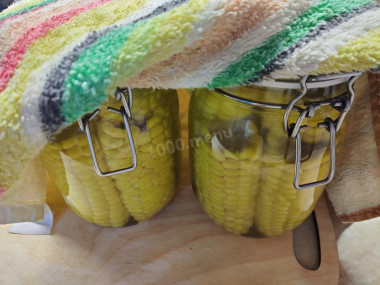
Wrap the jars with a towel and leave to cool at room temperature. Cans with ordinary lids can be turned upside down. This is done to check the tightness and additional sterilization. Store the cooled cans in the refrigerator. Bon appetit!
For salad, cut the grains from the cobs with a sharp knife.
It tastes sweet and sour, vinegar is felt. But it is dangerous to add less vinegar, as this is a quick way of canning, without long sterilization of cans in water. With less vinegar, corn can ferment.
Remember that spices such as salt, sugar, as well as vinegar and its substitutes are used in recipes for winter preparations not only for taste, but, first of all, as preservatives. Therefore, it is impossible to reduce the concentration of salt and sugar, as well as replace vinegar (essence) with weaker concentrations than indicated in the recipe, otherwise vinegar (salt / sugar) will not show their preservative properties and the workpiece will be spoiled.
For cooking, it is better to use filtered or bottled water that is neutral to taste. If you use tap water, keep in mind that it can give the dish an unpleasant characteristic taste.
How to calculate the number of cans, why banks explode and how to avoid it, as well as secrets and life hacks, read the article about preparations for the winter.
Caloric content of the products possible in the composition of the dish
- Field corn, raw, dried - 348 kcal/100g
- Sweet yellow raw field corn - 96 kcal/100g
- Field corn stewed, boiled, dehydrated (sliced - 83 kcal/100g
- Field corn boiled on the cob - 91 kcal/100g
- Germ-free raw fortified corn grits - 362 kcal/100g
- Corn grits without germ, raw, not fortified - 362 kcal/100g
- Corn - 119 kcal/100g
- Granulated sugar - 398 kcal/100g
- Sugar - 398 kcal/100g
- Wine vinegar (3%) - 9 kcal/100g
- Vinegar 9% - 11 kcal/100g
- Balsamic vinegar - 88 kcal/100g
- Apple vinegar - 14 kcal/100g
- Vinegar - 11 kcal/100g
- Salt - 0 kcal/100g
- Water - 0 kcal/100g

